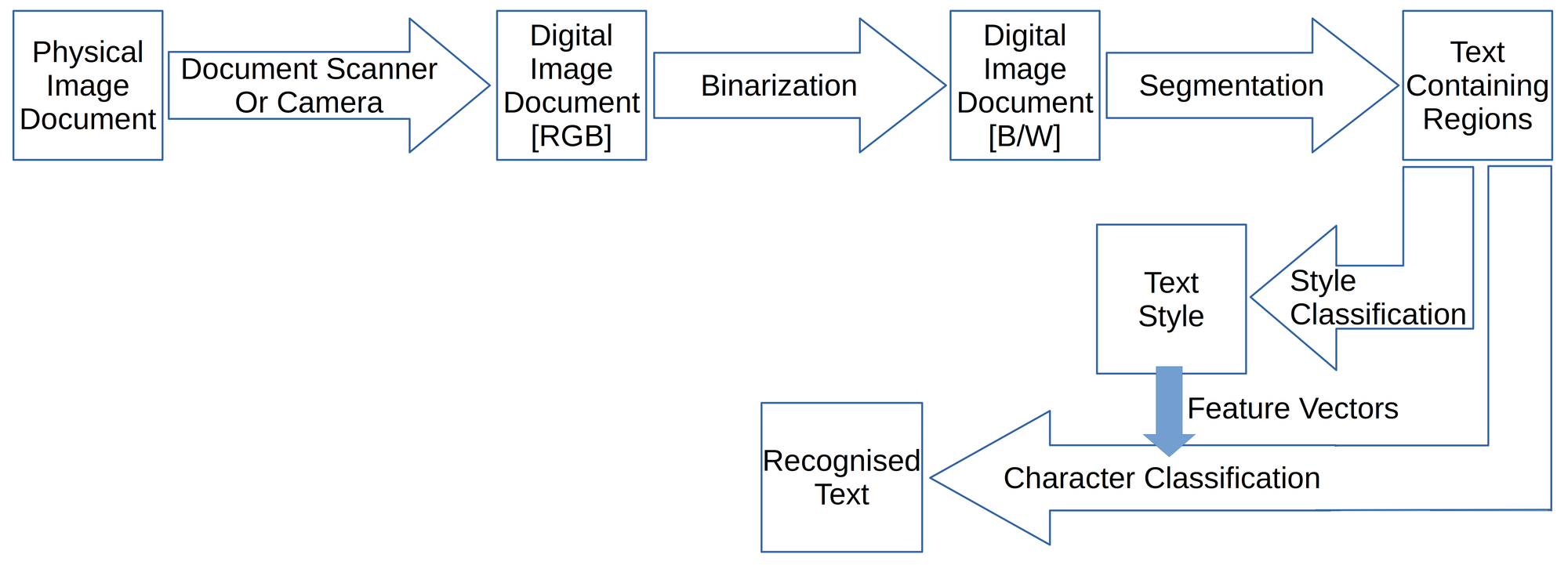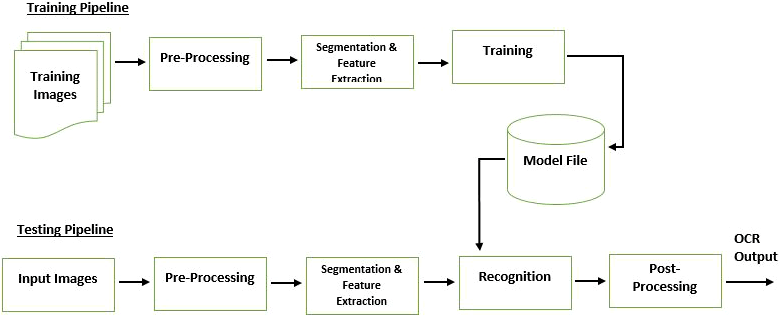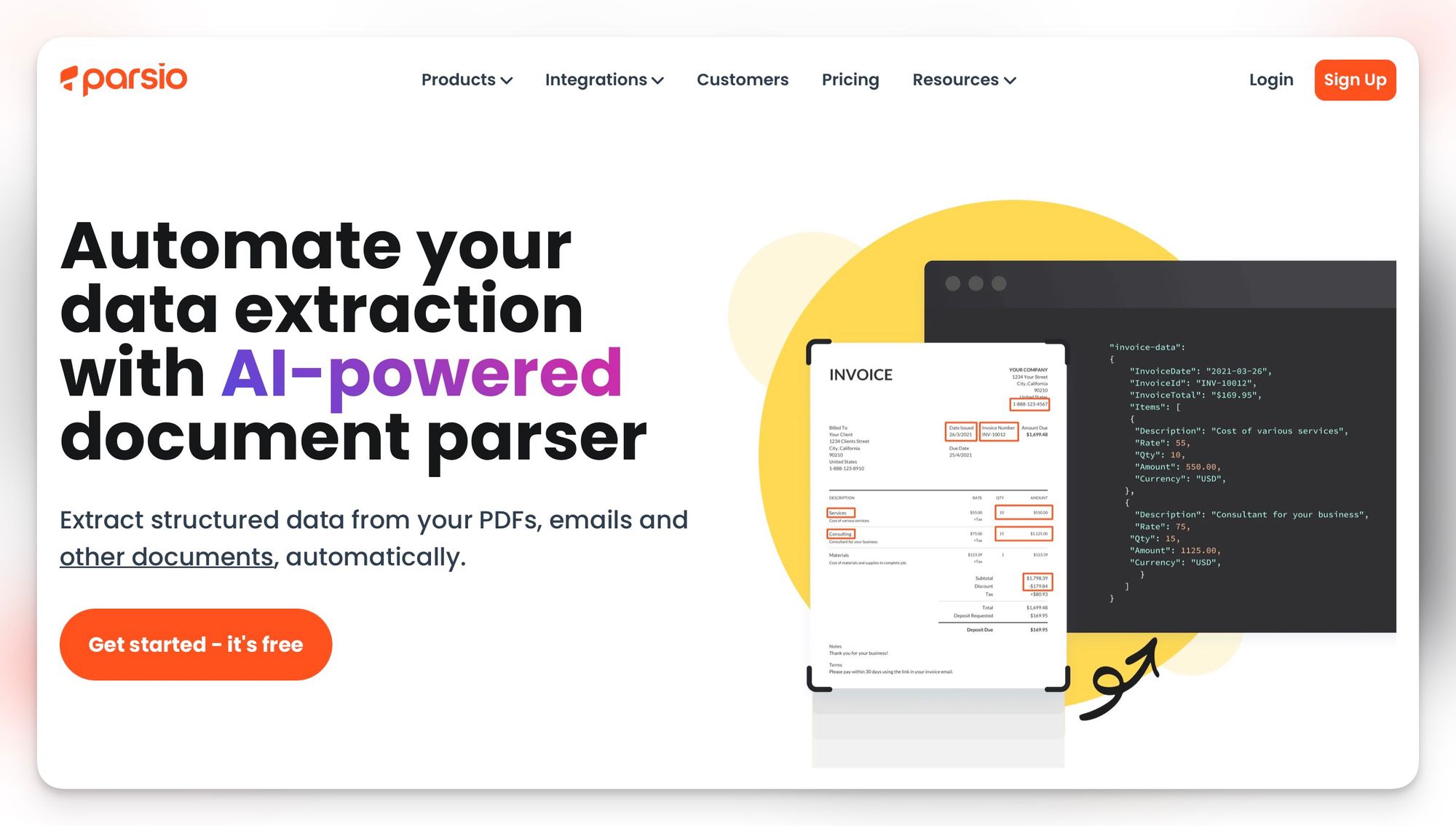How AI OCR Revolutionizes PDF Parsing and Data Extraction

In today's fast-paced business world, the ability to quickly and accurately extract valuable insights from data is crucial for staying competitive. Unfortunately, many organizations struggle with the challenge of extracting data from PDFs, which can be a time-consuming and error-prone process.
Recent global statistics have shown that businesses are drowning in data, with an estimated 328.77 million terabytes of data being generated every day. Over 90% of the world's data has been generated in just the last two years alone. This explosion of data presents both a challenge and an opportunity for businesses, as they must find ways to effectively manage and analyze this wealth of information.
This is where AI-driven Optical Character Recognition (OCR) comes in. With OCR, businesses can quickly and accurately extract valuable information from PDFs, allowing them to make data-driven decisions faster than ever before.
This article will discuss how the use of AI-driven OCR technology is transforming the way PDF parsing and extraction are carried out.
OCR Explained: What Actually It Is?
Optical Character Recognition (OCR) is a technology that converts printed or handwritten text into digital data that machines can read and process. OCR uses image recognition algorithms to identify text within an image or document, removes any noise or distortions, and then extracts and converts the text into machine-readable characters.
OCR technology has been around for decades and has become increasingly advanced with the advent of digital imaging and machine learning. Today, there are several types of OCR technology available, including zonal OCR and intelligent OCR, each with its strengths and weaknesses.

OCR technology is valuable for businesses looking to automate data entry and streamline document processing workflows. By leveraging OCR technology, businesses can quickly extract meaningful data from large files.
Challenges & Limitations of Traditional OCR Methods
It's fair to say that traditional OCR hasn't changed much since it first began. Here are some limitations that have hindered the scalable innovation of traditional OCR technology.
Limited Recognition of Non-standard Fonts and Formatting
One of the primary limitations of traditional OCR methods is their inability to accurately recognize non-standard fonts and formatting. These methods may struggle to recognize text written in cursive or decorative fonts or rotated, skewed, or distorted.
Additionally, documents with complex formatting, such as tables and columns, can be difficult to parse.
Difficulty in Handling Complex Documents and Data Types
OCR technology may struggle to accurately extract data from documents containing structured and unstructured data, inconsistent layouts and formatting. It can also face difficulty with multiple languages, character sets, images, and graphics. This limitation is particularly pronounced in industries such as healthcare, where patient data is often stored in various formats.
Limited Ability to Recognize Handwriting and Images
Traditional OCR methods may struggle to recognize handwriting or text within images. This can pose a challenge in industries such as finance and insurance, where handwriting is still commonly used on documents like checks and forms.
Difficulty in Recognizing Text on Low-Quality Scans or Images
OCR technology relies on high-quality scans or images to recognize text accurately. Low-quality scans or images can result in inaccurate OCR results. This limitation can be particularly problematic for organizations that rely on scanned copies of physical documents.
The AI-Driven OCR Approach
AI-driven OCR (Optical Character Recognition) technology uses advanced algorithms and machine learning techniques to overcome many of the limitations of traditional OCR methods.
How Does AI-Driven OCR Technology Work?
AI-driven OCR technology uses computer vision and natural language processing techniques to accurately recognize and extract text from documents. It relies on complex algorithms to identify and isolate individual characters and words within a document and then uses machine learning techniques to accurately identify the text and its context.

The Role of Machine Learning in Improving OCR Accuracy
Machine learning is a key component of AI-driven OCR technology. It allows the OCR system to "learn" from past examples of text recognition, enabling it to continually improve its accuracy over time.
This approach is particularly effective in handling complex documents and data types. It allows the system to adapt to new challenges and recognize a wider range of text styles and formats.
Advantages of AI-Driven OCR Systems
AI-driven OCR (Optical Character Recognition) technology offers several advantages over traditional OCR methods. These advantages include:
Improved Accuracy and Speed of Data Extraction
AI-driven OCR technology uses advanced algorithms and machine learning techniques to recognize and extract text from documents accurately. This approach is much more accurate and efficient than traditional OCR methods. As a result, AI-driven OCR systems can extract data faster and with a higher degree of accuracy, saving businesses time and money.
Handling Complex Documents and Data Types With Ease
OCR systems powered with artificial intelligence are designed to handle many document types, including those with complex layouts, multiple languages, and a mix of structured and unstructured data. This flexibility makes it ideal for industries like healthcare, where patient data is often stored in various formats.
Improved Data Security and Privacy
Artificial intelligence (AI) can help improve data security and privacy by reducing the risk of human error and ensuring that sensitive data is handled securely.
For example, an AI-driven OCR system can automatically redact sensitive information like social security numbers or credit card numbers from documents, reducing the risk of data breaches and compliance violations.
Practical Uses of AI-Driven OCR
AI-powered OCR (Optical Character Recognition) technology has various practical applications across industries.
- Finance and accounting - Processing invoices and receipts
- Healthcare - Digitizing medical records
- Legal services - Extracting information from contracts
- Government and public sector - Extracting data from public records
- Education - Managing student records
Parsio: The Leading AI-Based PDF Parsing Solution on the Market
Parsio is a powerful AI-driven OCR (Optical Character Recognition) software that can extract text data from a wide range of document types. Using state-of-the-art technology, Parsio can automatically extract valuable information from incoming emails and PDF files, saving you time and effort.

Unlike traditional OCR methods, Parsio uses advanced machine learning algorithms to recognize and extract data from various document types, including PDFs, scanned documents, handwritten texts, and images. This powerful tool can handle non-standard fonts, complex formatting, and data types, making it an ideal solution for businesses across different industries.
Parsio offers several advantages, including enhanced accuracy and speed in data extraction, as well as improved data security and privacy measures. Additionally, Parsio seamlessly integrates with other tools and platforms, enabling you to streamline your workflow and save valuable time and resources.
What Makes Parsio Different?
Effortless Email Parsing
With Parsio's advanced AI-powered technology, you can extract valuable text data from PDF files and incoming emails without manual effort, freeing up your time to focus on more important tasks.
Comprehensive Document Support
Parsio can extract data from various formats, including PDF, HTML, Excel spreadsheets, CSV files, Word documents, XML and JSON files, vCard/VCF contacts, and plain text files. It means you can easily work with any document type, no matter how complex or diverse.
Guaranteed Better Quality
Our AI-powered document parser provides a guarantee of high data accuracy, ensuring that you achieve maximum data quality. It surpasses the capabilities of even the best manual data entry experts.
Flexible Multichannel Import
Parsio makes importing data from multiple channels easy, including email forwarding, API integration, manual file upload, and popular automation platforms like Zapier, Make, and Pabbly Connect. This flexibility lets you choose the method that best suits your workflow, ensuring seamless integration with your existing systems.
Unlimited Mailboxes and Templates
It allows you to create unlimited mailboxes and templates to parse different email types, giving you the flexibility to tailor your email processing to your specific needs. This means you can easily manage and process large volumes of email data without restrictions or limitations.
Rock-Solid Security and Reliability
Parsio processes personal data in compliance with GDRP, ensuring your data is securely stored and protected by industry standards. You have complete control over your data and can permanently delete it anytime. With Parsio, you can trust that your data is safe and secure while enjoying reliable and uninterrupted service.
To Sum Up
AI-driven OCRs are set to revolutionize the future of PDF parsing and data extraction by enabling businesses to analyze vast amounts of data quickly and efficiently. The ability of AI to learn from large datasets means that OCRs can extract data from documents with high accuracy and without requiring any manual intervention.
Parsio is at the forefront of this AI OCR revolution. With the help of advanced AI-powered technology, it can accurately extract data from PDFs and other documents without requiring any manual intervention, saving businesses valuable time and resources.
